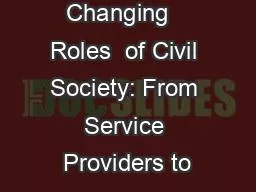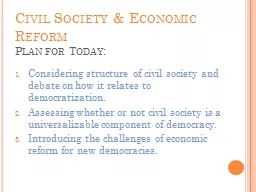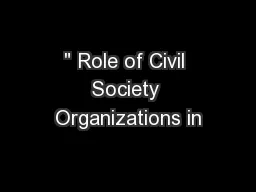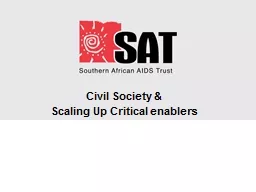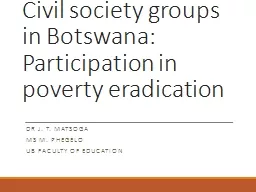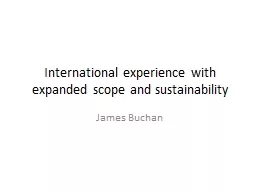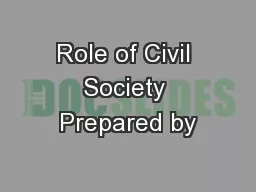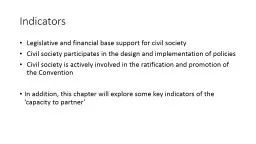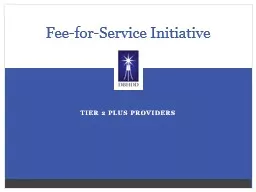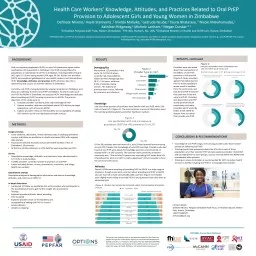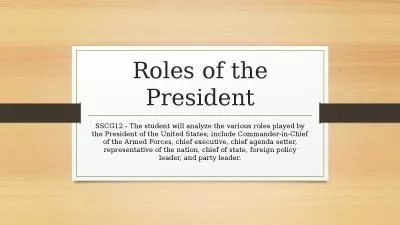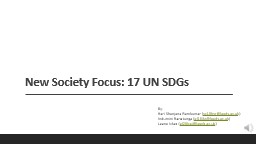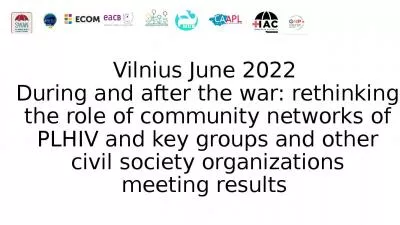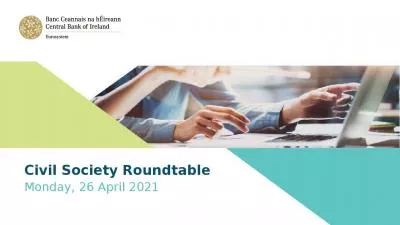PPT-Changing Roles of Civil Society: From Service Providers to
Author : leusemij | Published Date : 2020-11-06
Advocacy Communicators By Thomas Tufte Roskilde University Presentation given at seminar Media and Citizen Engagement experiences from Kenya and Tanzania Nairobi
Presentation Embed Code
Download Presentation
Download Presentation The PPT/PDF document "Changing Roles of Civil Society: From..." is the property of its rightful owner. Permission is granted to download and print the materials on this website for personal, non-commercial use only, and to display it on your personal computer provided you do not modify the materials and that you retain all copyright notices contained in the materials. By downloading content from our website, you accept the terms of this agreement.
Changing Roles of Civil Society: From Service Providers to: Transcript
Download Rules Of Document
"Changing Roles of Civil Society: From Service Providers to"The content belongs to its owner. You may download and print it for personal use, without modification, and keep all copyright notices. By downloading, you agree to these terms.
Related Documents

